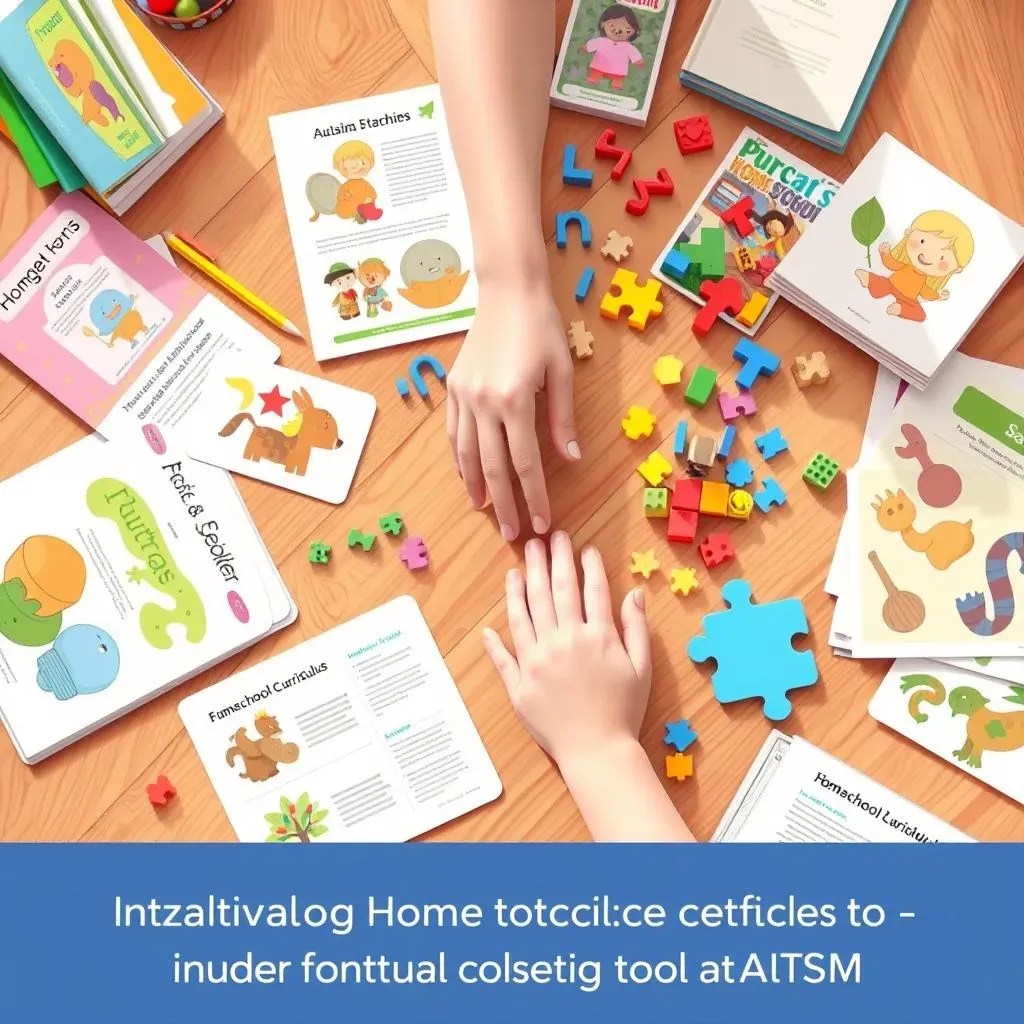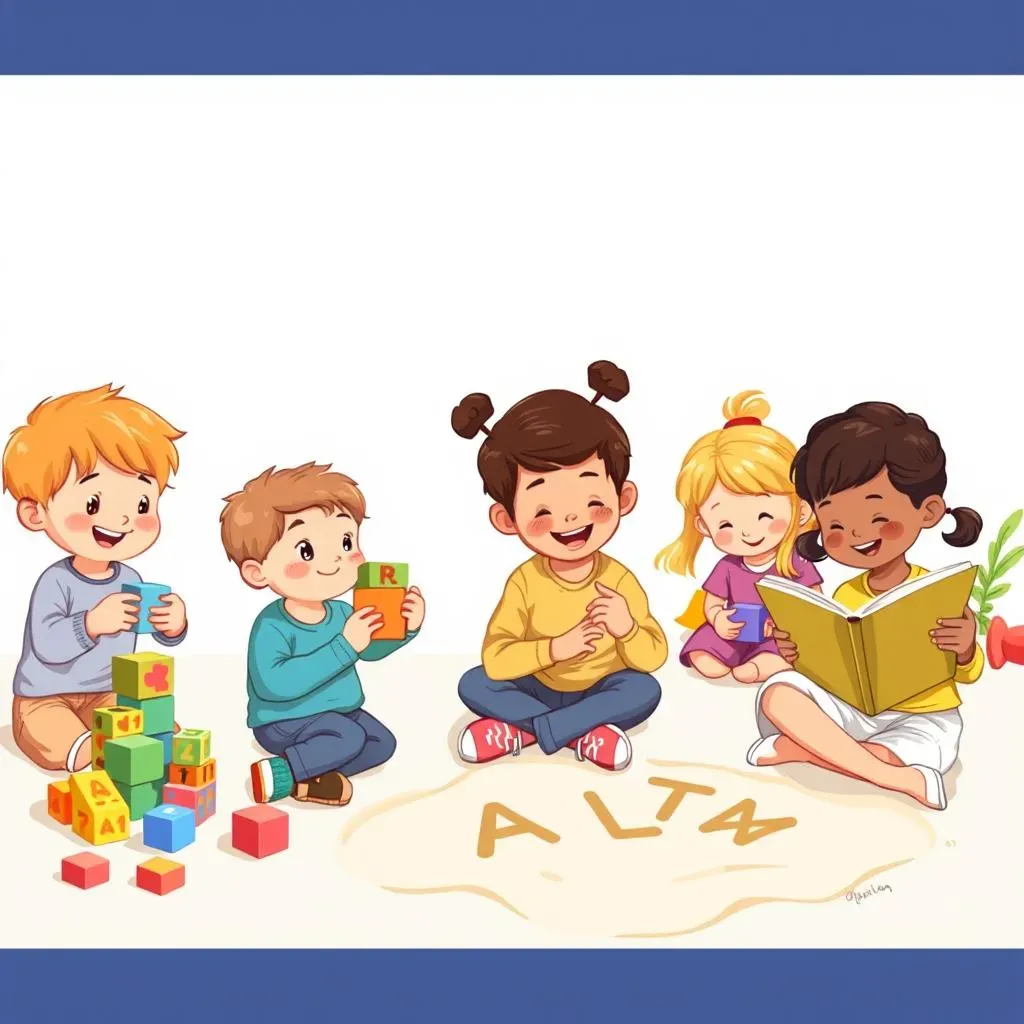Table of Contents
Is traditional schooling not quite fitting your child's needs? If you're exploring options for your autistic child, you're likely considering a homeschool curriculum for autism. It's a path many parents are choosing, and for good reason. Homeschooling offers a unique opportunity to tailor education to your child's specific learning style, pace, and interests. This approach recognizes that each child with autism is different, requiring personalized attention. We understand that navigating the world of homeschool curriculum for autism can feel overwhelming, but don't worry. In this article, we'll guide you through the key considerations, from understanding how autism affects learning to choosing the best programs. We’ll discuss how to adapt core subjects like reading, writing, and math and explain why some parents find Time4Learning a valuable resource in their homeschooling journey. So, get comfortable and let's explore how to make homeschooling a rewarding experience for your child.
Understanding Autism and Homeschooling
Understanding Autism and Homeschooling
Autism: A Spectrum of Unique Needs
Autism isn't a single thing; it's a spectrum. This means kids with autism are all different. Some might have a hard time with social cues, like understanding when someone is being sarcastic, while others might be super sensitive to loud noises or bright lights. This variation is why a one-size-fits-all approach in traditional schooling often doesn't work. Think of it like trying to fit a square peg into a round hole. It just doesn't go.
Some children might excel in math but struggle with reading comprehension, while others might be fantastic at art but find writing a challenge. These differences aren't just quirks; they're the way their brains are wired. What's amazing is that homeschooling can help you build an educational plan that truly plays to your child's unique strengths and addresses their specific needs. It's about creating a learning environment where your child can be their best self.
Why Homeschooling Can Be a Good Fit
So, why is homeschooling often a popular choice for families with autistic children? Well, traditional schools can be pretty rigid. They often operate on a fixed schedule, with large classes, and lots of sensory stimulation. This can be overwhelming for a child who thrives on routine and predictability, or who is sensitive to external stimuli. Homeschooling, on the other hand, gives you the power to create a calm, structured environment that's tailored to your child's needs.
It's like having a custom-made suit instead of a hand-me-down. You can set the pace, choose the curriculum, and even decide when and where learning takes place. This flexibility is a game-changer, allowing you to reduce stress and anxiety for your child, which, in turn, can lead to more effective learning. It's also an opportunity to focus on your child’s specific interests, turning learning into an exciting adventure rather than a chore.
Key Considerations Before You Start
Before you jump into homeschooling, let's be real – it's not a walk in the park. It requires time, patience, and a good dose of research. You'll need to understand your child's specific challenges and strengths, and you'll need to be willing to adapt your approach as your child grows and changes. It's also a good idea to connect with other homeschooling families, especially those with autistic children. They can offer invaluable support, advice, and a sense of community.
But here's the good news: you don't have to be a certified teacher to be a great homeschool parent. What you do need is a commitment to learning, a willingness to be flexible, and a whole lot of love. With the right approach, homeschooling can unlock your child's full potential, creating a learning experience that is both rewarding and empowering.
Factor | Traditional School | Homeschooling |
|---|---|---|
Environment | Large classes, fixed schedule, sensory stimulation | Calm, structured, tailored to individual needs |
Pace of Learning | Fixed pace for the entire class | Flexible pace, adjusted to the child |
Curriculum | Standardized curriculum | Customizable curriculum |
Socialization | Structured peer interactions | Opportunities for varied social interactions |
Choosing the Right Homeschool Curriculum for Autism
Choosing the Right Homeschool Curriculum for Autism
Understanding Your Child's Needs
Alright, so you're thinking about a homeschool curriculum for autism, that's awesome. But before you start browsing through endless options, let's take a step back. It's all about understanding what makes your child tick. What are their strengths? Do they love building things, or are they more into stories? What are their challenges? Does your child get overwhelmed by too much information at once, or are they easily distracted? Knowing these things is like having a map before you go on an adventure. It helps you choose a path that's right for them.
Think about it: a curriculum that works wonders for one autistic child might be a disaster for another. It's not about finding the "best" curriculum overall; it's about finding the best fit for *your* child. For instance, some kids respond really well to visual aids, like pictures and diagrams, while others might prefer hands-on activities. Some might need a highly structured routine, while others do better with a bit more flexibility. Take your time, observe your child, and get a clear picture of their needs. It's the most important step in choosing the right homeschool curriculum.
Key Features to Look For
Now that you've got a good handle on your child’s needs, let's talk about what to look for in a homeschool curriculum for autism. First off, flexibility is key. You need a curriculum that allows you to adjust the pace, content, and teaching style to match your child's progress and preferences. A rigid, one-size-fits-all approach just won't cut it. Look for programs that offer different learning formats, such as videos, interactive games, and hands-on activities. Variety keeps things engaging and caters to different learning styles.
Another thing to consider is the curriculum's structure. Kids with autism often thrive on routine and predictability. A well-organized curriculum can provide a sense of safety and reduce anxiety. Look for programs that have clear lesson plans, consistent layouts, and predictable routines. Finally, make sure the curriculum is engaging and enjoyable for your child. Learning should be fun, not a chore. If your child is excited about the material, they'll be much more motivated to learn. It's like finding a book that you just can't put down – you're naturally drawn to it.
- Flexibility: Can you adjust the pace and content?
- Variety: Does it offer different learning formats?
- Structure: Is it well-organized with clear lesson plans?
- Engagement: Is the material fun and enjoyable for your child?
Tailoring Instruction: Teaching Core Subjects with Autism
Tailoring Instruction: Teaching Core Subjects with Autism
Reading: Beyond the Basics
Okay, let's talk reading. For kids with autism, it's not always as simple as picking up a book. Some might be visual learners, needing pictures to connect with words, while others might benefit from a multisensory approach, like tracing letters in sand. Think of it like learning to ride a bike—some kids get it right away, others need training wheels, and some need a helmet and knee pads. The point is, you need to figure out what works for your child. Start with books that match their interests, not just their reading level. If they love dinosaurs, find books about dinosaurs! Make it fun, not a chore.
Don't be afraid to use different tools like graphic organizers, highlighting key words, or even acting out scenes from the story. The goal isn't just about decoding words; it's about understanding and enjoying the story. You might even try using audiobooks alongside the physical book, so they can hear the words while they see them. It's all about finding the right mix of strategies that click with your child.
Writing: Expressing Thoughts and Ideas
Next up, writing—which can be a real challenge for many kids, autistic or not. But, for some autistic children, the act of putting thoughts onto paper can feel like trying to wrestle a slippery fish. They might struggle with fine motor skills, or have a hard time organizing their thoughts. But, don't worry, there are ways to make it easier. Start with smaller steps. Maybe they begin by drawing pictures and adding a few words, or dictating stories to you while you write them down. It’s about making the process less daunting.
There are lots of cool tools that can help. Try using a keyboard instead of handwriting if that's easier. Or, use graphic organizers to help them plan out their ideas before they start writing. You could also try visual prompts, like pictures or story starters. The key is to be patient and creative. Remember, the goal is to help your child express their thoughts and ideas, not to become the next Shakespeare overnight. Small wins are still wins, and they add up over time.
Math: Making Numbers Make Sense
Last but not least, let's tackle math. For some autistic children, numbers are like a puzzle they love to solve, while for others, it’s like trying to decipher a foreign language. The key is to make it visual and hands-on. Instead of just using worksheets, try using manipulatives, like blocks, beads, or even LEGOs. This helps them see and touch the math concepts, making them more concrete. You could also try using real-life examples, like measuring ingredients for baking or counting toys.
Don't rush through the material. It's okay to spend extra time on a concept if they need it. Break down complex problems into smaller, more manageable steps. Use visual aids, like number lines or charts. And, most importantly, make it relevant. Find ways to connect math to their interests. If they love cars, use toy cars to practice counting or sorting. The more you make math engaging and relevant, the more likely they are to grasp the concepts and enjoy the challenge. Remember, it's about building a solid foundation and fostering a love for learning.
Subject | Strategies for Autism |
|---|---|
Reading | Visual aids, multisensory approach, interest-based books |
Writing | Smaller steps, keyboard use, graphic organizers, visual prompts |
Math | Manipulatives, real-life examples, visual aids, break down complex problems |
Benefits of Using Time4Learning as a Homeschool Curriculum for Autism
Benefits of Using Time4Learning as a Homeschool Curriculum for Autism
Time4Learning: A Tailored Approach for Autism
Alright, so we've talked about the unique needs of autistic children and what to look for in a homeschool curriculum. Now, let’s get into the nitty-gritty of why Time4Learning often pops up in conversations about homeschooling kids with autism. It’s not just another online program; it’s designed with flexibility and structure in mind, which, as we’ve discussed, are key for autistic learners. Think of it as having a toolkit that you can customize to fit your child’s specific needs. Time4Learning isn't a rigid, one-size-fits-all program. It’s a platform that allows you to adjust the pace and content, ensuring your child isn't overwhelmed or bored. It's about creating a learning journey that feels right for them, not forcing them into a mold that doesn’t fit.
Flexibility and Structure Combined
One of the biggest wins with Time4Learning is that it understands the need for both flexibility and structure. The program is set up in a way that provides a consistent routine. For many autistic children, that consistency is a must. You know what's coming next and you know what's expected. But, it’s also adaptable. If your child is having an off day, you can slow things down or take a break. If they’re really into a particular topic, you can spend more time on it. The platform also provides a variety of learning formats, including animated lessons, interactive games, and printable worksheets. This variety helps keep things interesting and caters to different learning styles. It’s like having a buffet of learning options, where you can pick and choose what works best for your child.
Furthermore, Time4Learning offers a safe and predictable environment. The structured nature of the online platform can be incredibly helpful for autistic children, reducing anxiety and maximizing comfort. The navigation is clear and consistent, so there are no surprises or sudden changes. This predictability can be a huge relief for kids who thrive on routine. Plus, the visual and auditory components of the program are often engaging and motivating, which helps to keep your child focused and interested in the material.
Feature | Benefit for Autism |
|---|---|
Flexible pacing | Adjusts to child's learning speed |
Structured platform | Provides routine and predictability |
Variety of formats | Keeps learning engaging |
Safe environment | Reduces anxiety and maximizes comfort |
Socialization and Confidence Building
Now, some folks worry that homeschooling might limit social opportunities. But, Time4Learning has got you covered. The program includes animated videos and teacher-led lessons that model positive social interactions and communication skills. These can provide a safe space for your child to learn about social cues and behaviors without the pressures of a traditional classroom. Plus, homeschooling allows you to create social opportunities that are tailored to your child’s interests and comfort levels. You can join local homeschool groups, participate in community activities, or even arrange playdates with like-minded friends. It’s about finding the right balance between structured learning and social interaction.
Another benefit of Time4Learning is that it can help build your child’s confidence. The program is designed to provide positive reinforcement and celebrate achievements, no matter how small. As your child progresses through the lessons and masters new skills, they’ll gain a sense of accomplishment and self-esteem. This is crucial for kids with autism, who may have experienced setbacks or frustrations in other learning environments. It’s like giving them a ladder to climb, one step at a time, and watching them reach new heights with pride.
Practical and Cost-Effective
Let's be real, homeschooling can sometimes feel like a big investment, both in terms of time and money. But Time4Learning tries to make it as practical and cost-effective as possible. The program offers a 14-day money-back guarantee, so you can try it out and see if it's a good fit for your child without any risk. And, if you have multiple children, they offer a 30% discount for each additional student, which is a huge help for families. Plus, the platform provides a range of resources to support you on your homeschooling journey. You can access lesson plans, printable worksheets, learning styles guides, and even a lesson planner tool. It’s like having a personal assistant to help you stay organized and on track. With all of these resources at your fingertips, you can focus on what matters most: helping your child learn and grow.
Overall, Time4Learning isn’t just a curriculum, it’s a comprehensive support system. It’s designed to be flexible, structured, engaging, and affordable, which makes it a popular choice for families homeschooling autistic children. It gives you the tools and resources you need to create a successful and rewarding learning experience for your child. It’s like having a co-pilot on your homeschooling journey, guiding you every step of the way. And the best part? You get to see your child thrive in an environment that’s tailored to their needs, which is a reward in itself.